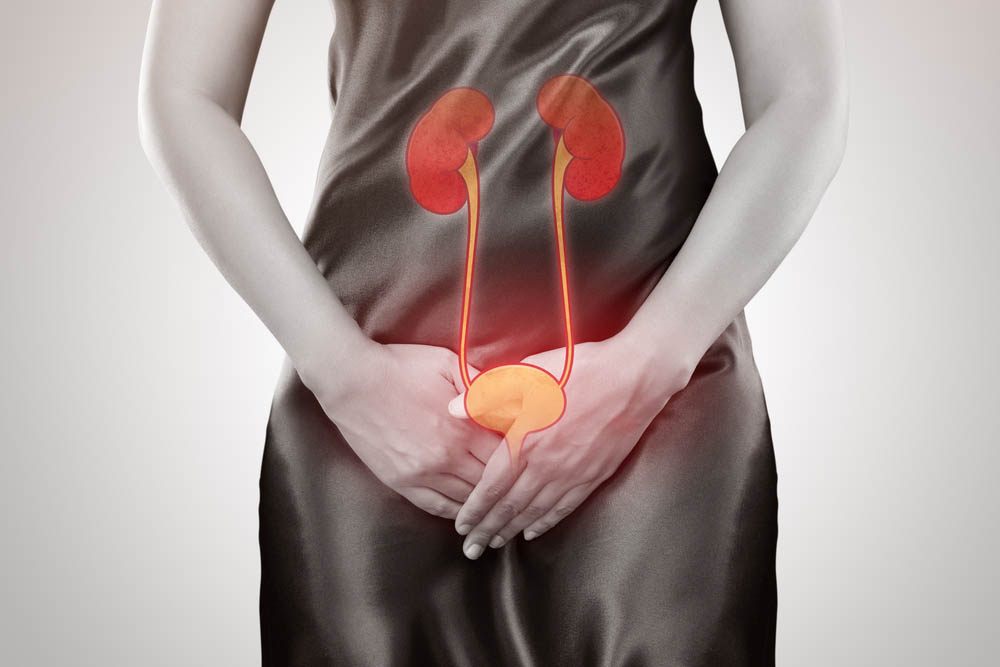So, you know how sometimes you feel that burning sensation when you pee? Well, that could be a sign of a urinary tract infection (UTI).
UTIs are a common health concern affecting millions of adults worldwide. They can range from being a minor nuisance to causing serious health complications if not treated promptly.
From identifying whether you have a UTI to learning how to prevent it, here’s everything you need to know about this condition.
An overview of urinary tract infections in adults
What is a urinary tract infection?
A urinary tract infection is an infection that affects your urinary system, including these body parts:
- Kidneys
- Ureters
- Bladder
- Urethra
Most infections happen in your lower urinary tract — the bladder and the urethra.
Types of UTI
UTIs can be classified based on the part of the urinary system they affect, including bladder infections (cystitis), urethra infections (urethritis) and kidney infections (pyelonephritis).
Each type presents unique symptoms and requires specific treatment approaches, which is why it’s important to have accurate diagnosis to effectively manage and treat the infection.
Bladder infection (Cystitis)
This type of UTI is most commonly caused by Escherichia coli (E. coli), a type of bacteria commonly found in your gastrointestinal (GI) tract.
Urethral infection (Urethritis)
This infection occurs when GI bacteria spread from your anus to your urethra. Poor genital hygiene practices, including wiping from back to front after bowel movements, can introduce bacteria from the anus to the urethra, which increases the risk of urethritis.
Because the female urethra is close to the vagina, sexually transmitted infections (STIs) can also cause urethritis, including:
- Herpes
- Gonorrhoea
- Chlamydia
- Mycoplasma
Kidney infection (Pyelonephritis)
Pyelonephritis occurs when bacteria from the lower urinary tract ascend through the ureters to infect your kidneys. Like other types of UTIs, this infection is most commonly caused by E. coli, but other bacteria can also cause kidney infections.
This upper urinary tract infection can be serious and can lead to kidney damage if left untreated.
The prevalence of urinary tract infections: How common are they?
UTIs are among the most prevalent infectious diseases, with a significant portion of the adult population experiencing at least one UTI in their lifetime. Women are especially prone to recurrent UTIs due to their anatomy, with about 50-60% of women likely to experience a UTI.
Urinary tract infections: Symptoms and causes
Look out for these signs if you suspect having a UTI.

Identifying symptoms of a urinary tract infection
UTI can manifest in symptoms that include the following:
- A strong persistent urge to urinate
- A burning sensation when urinating
- Passing frequent, small amounts of urine
- Urine that appears cloudy, red, bright pink
- Urine that appears cola-coloured — a sign of blood in the urine
- Strong-smelling urine
- Pelvic pain
How do you get a urinary tract infection?
UTIs occur when bacteria enter the urinary tract through the urethra and begin to multiply in the bladder. While the urinary system is designed to keep out such microscopic invaders, these defences can fail, and infection can happen.
Primary factors contributing to urinary tract infections
These are the factors that can increase the risk of UTIs:
- Female anatomy
- Sexual activity
- Certain types of birth control
- Menopause
- Urinary tract abnormalities
- Blockages in the urinary tract
- A suppressed immune system
- Catheter use
- Recent urinary procedure
High-risk groups for urinary tract infections
Those who are at a higher risk for developing UTIs include:
- Women, particularly those who are sexually active and postmenopausal women
- Individuals with conditions that block the urinary tract, such as kidney stones
- People with weakened immune systems
Can you get a UTI from your fingers?
While it’s uncommon, bacteria from your fingers can potentially introduce bacteria into the urethra, especially if you don’t follow proper hygiene practices.
That said, see to it that you wash your hands before and after using the bathroom or engaging in sexual activity.
UTI Tests and diagnosis
When you feel any UTI symptoms, it’s advisable to get tested to know your infection status.
What procedures are used for diagnosis?
If you decide to get tested for UTI, you’ll undergo a test called urinalysis to check for the presence of white blood cells, red blood cells and bacteria in your urine.
Your healthcare provider may also order a urine culture to identify the specific type of bacteria causing the infection. This can help to determine the most effective treatment.
This diagnostic process is crucial for confirming the presence of a UTI and guiding appropriate therapeutic interventions.
Urinary tract infection treatment
Depending on the cause, there are several options to treat UTI. For recurrent UTIs, more comprehensive treatments or investigations may be necessary to address underlying issues.
Medication options
Antibiotics are the standard treatment for UTIs. The type, dose and length of the antibiotic treatment depend on the type of bacteria causing the infection and your medical history.
Alternative and complementary therapies
While antibiotics are necessary for treating UTIs, certain lifestyle and dietary adjustments can complement treatment. These include consuming cranberry products, though evidence of their effectiveness is mixed, and taking probiotics to restore the natural balance of bacteria in your body.
UTI Prevention
Here’s what you should do to prevent UTI:
- Maintain proper personal hygiene
- Increase your fluid intake to help flush bacteria from the urinary system
- Urinate when the need arises without delay and fully emptying the bladder
- Avoid irritants such as harsh soaps and sprays in the genital area, which can upset the natural flora
Maintain proper hygiene practices
Good personal hygiene, especially around the genital area, can significantly reduce the risk of bacteria entering the urinary tract. This includes:
- Wiping from front to back
- Avoiding irritating feminine products
- Using the bathroom before and after sexual activity
Drink plenty of fluids
Staying well-hydrated helps dilute the urine and ensures more frequent urination, which allows bacteria to be flushed from the urinary tract before an infection can begin.
Adopt healthy urination habits for UTI prevention
Together with drinking plenty of fluids, urinating frequently and when the need arises prevents bacteria from settling in your bladder. It’s also important to urinate shortly after intercourse to flush out any bacteria that may have entered your urethra.
Use a water-based lubricant during sex
Using a lubricant can help reduce irritation and the risk of bacterial transfer. Choose water-based lubricants as they’re less likely to cause irritation or disrupt the natural flora.
Key takeaway
Understanding the intricacies of UTIs is crucial for prevention, early detection, and effective treatment. By recognizing the symptoms and risk factors, adopting preventive measures and seeking appropriate treatment, you can significantly reduce the impact of UTIs on your health and wellbeing.























































